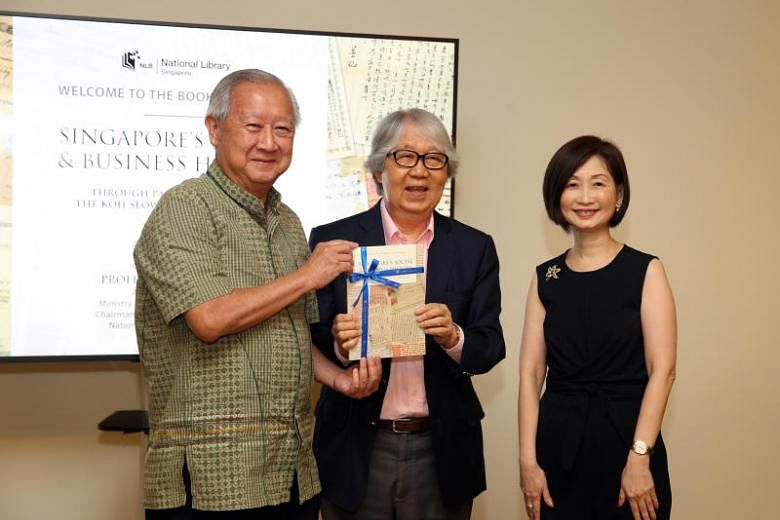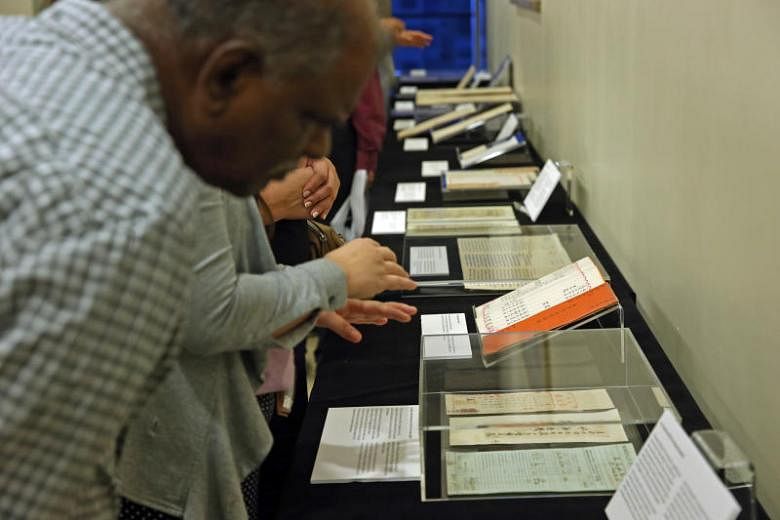SINGAPORE - A research publication is hoping to bring a fresh perspective to Singapore's history through the documents of everyday life such as receipts and the remittance letters of immigrants adapting to their new home.
The book, Singapore's Social And Business History Through Paper Ephemera In The Koh Seow Chuan Collection, was officially launched by Ambassador-at-large Tommy Koh on Tuesday (Nov 21) at the National Library Building.
National Library Board (NLB) chief executive officer Elaine Ng said the publication highlights "how these small ordinary documents can be used to piece together aspects of early Singapore history".
The book features three essays using materials from the library's Koh Seow Chuan collection, which consists of more than 9,000 items from legal and business documents to maps, hand-carried letters, photographs, artworks and books.
Mr Koh Seow Chuan, a prominent architect, is an avid collector of social historical documents, many of which he has donated to NLB. The extensive collection includes documents on the various ethnic communities in the early years, as well as early pioneers and their family fortunes.
In his speech, Mr Koh urged other collectors to also offer the pieces of history they own, so that more in-depth studies on Singapore's past can be done.
The new book looks at how letters written between the 1950s and 1970s that accompanied remittances discussed matters such as marriage, ancestor worship and education, maintaining family ties between Chinese immigrants and their families back home.
A letter from a Chinese immigrant to his mother and wife, for example, informed them of his inability to send more money for his brother's marriage because of how little he earned here but he promised he would try his best to help closer to the marriage date.
The book also provides a glimpse into the daily commercial operations of one of Singapore's best-known family-owned businesses, Eu Yan Sang, as well as the business practices of the Chettiar moneylenders from India.
The essays were put together by Nanyang Technological University assistant professor Koh Keng We and his students, Mr Kannan Kesavan, 27, and Ms Dong Huiying, 25.
Dr Koh, 45, said as fragmentary as they may be, paper ephemera such as receipts and letters reveal the everyday lives of the common person in the past.
"When we talk about Singapore's history, most of the earlier history works have relied mainly on official sources and print media," he added.
"So these materials, whether legal documents, receipts or letters, provide another side of Singapore's history, especially the everyday life that you don't normally get through the official sources."
The book is available at the Lee Kong Chian Reference Library at the National Library Building, and at selected public libraries, including Jurong Regional Library and Bishan Public Library.




